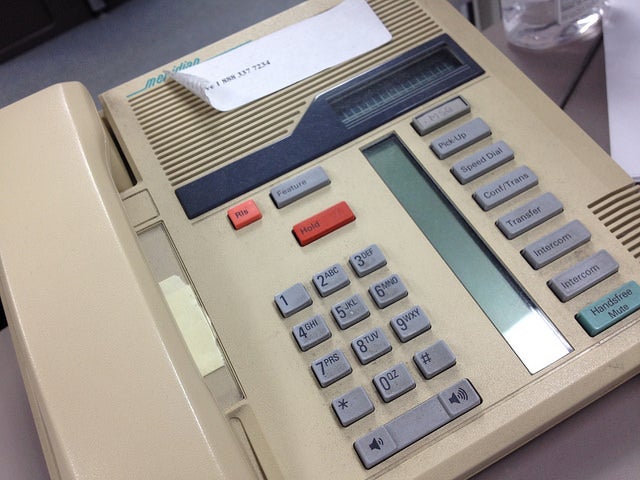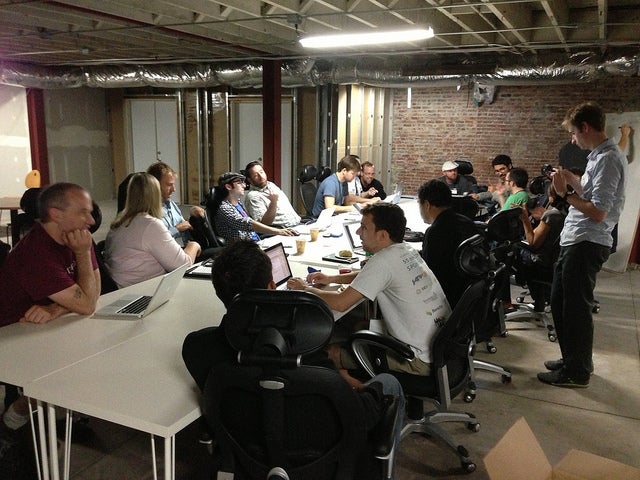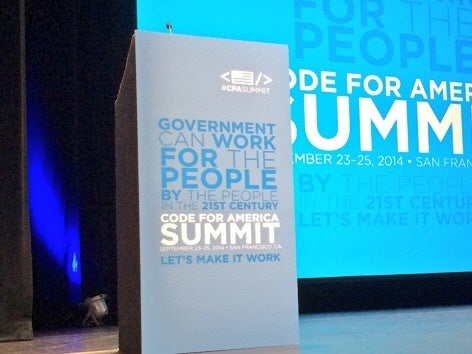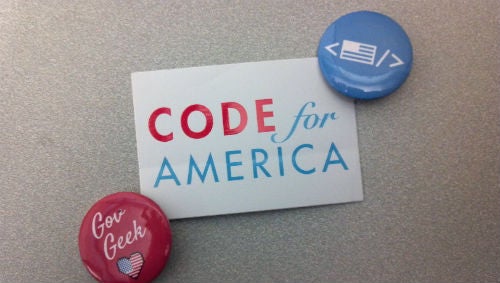Before I started volunteering with Code for America as Chicago’s Brigade Captain, I worked in a field office for the Illinois Department of Employment Security. I was hired at the start of the recession to help the state deal with the massive number of people who had been laid off in our city.
I would arrive at 8:00am (30 minutes before we’d open), and there would already be about 50 people lined up outside the door—even in the winter months. The phone system would start ringing immediately. Most of us had to turn the volume to it’s lowest level because it wouldn’t stop ringing until we left the building. The challenge was, if the phone rang, you were supposed to pick it up unless you were seeing a claimant—which was pretty much every single moment spent at the office. I was always talking to somebody or fixing a problem or doing some task that needed to be done right away. It was a rare moment in which I could pick up the phone and give someone my undivided attention.
Now, my phone was "space age technology." In marketing parlance, that meant it came out in the late 1980s.

Ours was an older system that they don’t manufacture anymore. The system only allowed a set number of circuits, so at peak times, callers couldn’t get through. The voicemail system was also pretty limited. If we got enough calls and our voicemail boxes became overloaded, the whole phone system would crash. This resulted in people complaining to higher ups, which resulted in the higher ups coming down on us to clear out our voicemails, which—for me—meant halting whatever I was doing and spending 5 minutes cleaning out messages that I wasn’t sure I could respond to in a timely manner.
As a consequence, I would tell people that they’re better off coming in early first thing so that I would know that I’d have enough time to fix whatever it that needed to be fixed.
Ninety percent of the time, the issue is that when a claimant called to certify for benefits, they would inadvertently make a mistake when calling Tele-Serve (IDES’s Interactive Voice Response system—also space age technology). Even when I used the Tele-Serve system, usually to help a non-English speaker navigate the system, I would make errors. The simplest way to fix the error was just to call the office. However, you couldn’t get through to the office. So, you spent even more time by coming to the office. Meanwhile, the department couldn’t pay your benefits because the computer thought there was an issue with your claim. Even after they upgraded our phone system to outsource the calls to a call center downstate, people still came in and reported that they could never get through.
Eventually, the department got the ability to have claimants certify online. However, this only helps people who have access to and the skills to use the internet. If you’re poor and more vulnerable to economic downturns, odds are, you’re not going to have Internet at home. In addition, the Internet certification site doesn’t work on mobile.
However, it was a new system. The continued challenge was that this system was expensive with myriad issues. By the time it launched, the agency was flat broke, and the state laid off virtually everyone they had hired to help with the recession. My first day at the 2012 Code for America Summit was also my first day of unemployment.

Fast forward to this year. I’ve been part of the Code for America Brigade for almost three years now and am now part of the Communities team, helping coordinate the Midwest Regional Pilot. Every time I go to the Code for America Brigade Summit, I’m flabbergasted by the amount of growth that the organization has experienced, especially in tackling more social service issues that help the front line.
In particular, the health team’s presentation this year brought flashbacks to my space age phone. The convoluted signup process, the inability to answer the phone when claimants called, the terrible telephone system, the debit cards we’d give out that had their own set of issues—it was all hauntingly familiar. Now with Balance, a new app, those who use EBT cards for food benefits can send a simple text message to check their balance.
I had known about Balance and some of their other work, but there was one app that made me squeal like a fangirl at an One Direction concert. That app is Connect.
I couldn’t help but imagine what I would have been able to do with these kind of tools when I was working in the trenches of unemployment. Instead of telling people to come into the office first thing, I could just say, "Text this number and we’ll get back to you." Instead of having people deal with the terrible Tele-Serve system, I could have people text the system back and forth. With a texting service, it would be possible to make the services available in a lot of different languages. We could show people where the job fairs are—all without having to revamp the legacy system that we inherited when we took the job.
 These are tools for the front line! Tools that help ease the interaction between the government front line worker and the residents they’re trying to help! I’m super excited that not only is the health team continuing, but that Code for America is working on focus teams for economic development and safety and justice. I’m also excited that these tools are simple enough to be redeployed by Brigades across the country. During the Summit, they held a hack session where attendees helped to redeploy the Balance app to multiple states.
These are tools for the front line! Tools that help ease the interaction between the government front line worker and the residents they’re trying to help! I’m super excited that not only is the health team continuing, but that Code for America is working on focus teams for economic development and safety and justice. I’m also excited that these tools are simple enough to be redeployed by Brigades across the country. During the Summit, they held a hack session where attendees helped to redeploy the Balance app to multiple states.
In that one seven minute session, it really drove home the theme for this year: Government can work for the people by the people in the 21st century.
Originally posted on the Code for America Summit as Making Government Work in the Trenches. Reposted via Creative Commons.







Comments are closed.